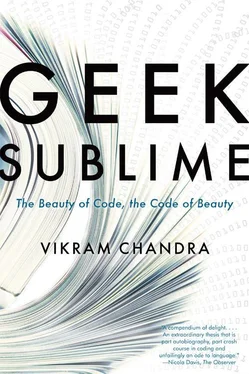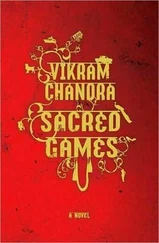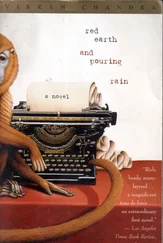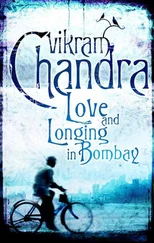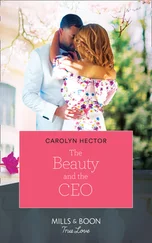But there is evidence that women participated avidly in the production of belle lettres. In his Kavyamimamsa (Investigation of poetry), a sort of manual for aspiring poets, Rajashekhara devotes part of the tenth chapter to describing how a poet should utilize the quarters of a day: (1) study all branches of knowledge; (2) write poetry; (3) participate in a “stimulating talk” about poetry and aesthetics with other poets; (4) workshop the poetry written in the morning. He describes various types of poets and then he writes:
Women can be as good poets as men. Poetic power is born of saṃkāra (traces or impressions). These impressions are a part of the inner soul. Thus there need be no discrimination between men and women. There are any number of princesses, daughters of ministers and performing artistes who are endowed with ability born of knowledge of the śāstras [sciences] and with the ability to compose poetry. 29
Rajashekhara’s wife, Avantisundari, was a renowned poet, learned critic and rhetorician; he quotes her in his book repeatedly, and she is mentioned in other texts of the period.
So if there was any number, some number, of women with the education, leisure, and inclination to write poetry, where is their work? Susie Tharu and K. Lalita, editors of the invaluable anthology Women Writing in India , write in their preface, “When we began work we were repeatedly warned, often by reputed scholars, that we would find few significant women writers in Marathi or Kannada or Urdu literature … We began, therefore, somewhat tentatively — hopeful, but uncertain.” As they researched, reading “social histories, biographies, and autobiographies,” they found “debates in which women had intervened … wives, companions, and mothers who ‘also’ wrote … rebel medieval poets, sixteenth-century court historians, and many unknown women poets, novelists, and polemical writers.” 30But locating manuscripts for some of the texts required much labor; one of the editors found handwritten copies of a nineteenth-century devotional poet’s poems in her own aunt’s prayer room: “Though Venkamamba’s work had found no place in public systems of distribution, it had been kept alive in an alternative mode, as it was handed across from woman to woman.” 31
One story that Tharu and Lalita tell may stand as emblematic of how public systems of distribution can shape our sense of the past: the courtesan Muddupalani was famous for her poetry during the reign of Pratapasimha, who ruled the southern kingdom of Thanjavur from 1739 to 1763. “Music, dance, and literature flourished as did painting and sculpture,” and Muddupalani was one of the luminaries of this “Golden Age of Telugu Literature.” 32She was honored by the king for her poetry and her learning in Telugu and Sanskrit literature; she was praised by contemporary critics; literary works were dedicated to her. In her own work, she proudly proclaims her literary heritage — her mother, her grandmother, her paternal aunt, all poets — and tells the reader that she herself is “incomparable … among her kind.” 33
Thanjavur was annexed by the British in 1855, and as elsewhere, entire classes of people who depended on traditional patronage — courtesans, artists, writers, artisans — disappeared into penury and obscurity. A great restructuring of values followed, and much of this process was articulated through the Western-style novels written by members of the new middle class. Particularly prominent debates raged over proper masculinity and femininity, over sexuality, over what it meant to be “civilized.”
One of the main British accusations against Indian culture was that it was sexually degenerate, that Indians were promiscuous and perverse. The narrative of history developed by Western historians posited a very distant past when Indian civilization had been great; from those properly classical, chaste Vedic heights India had undergone a long descent into depravity, into the darkness of moral confusion and unspeakable Oriental vices and societal decay. Tantra was prime evidence of this degeneration; it was “nonsensical extravagance and crude gesticulation” (H. H. Wilson); it was “Hinduism arrived at its last and worst stage of medieval development” (Sir Monier-Williams); it was “black art of the crudest and filthiest kind” (D. L. Barnett); and it was politically subversive: “The unnatural depravity represented in the form of erotomania is certainly more common among Hindu political fanatics” (V. Chirol). 34The British, who were the rational, ethical post-Renaissance inheritors of their own classical past, were obliged to take power in order to restore order, cleanliness, and moral hygiene. The Indian reformers who responded to this narrative often understood modernization to comprise a suppression of aspects of Indian culture which were now understood to be uncivilized, primitive, embarrassing, Oriental, as well as a restructuring of chaotic Indian traditions to remake them in the image of coherent, unitary Western intellectual and religious systems. A new nationalistic Hinduism was invented; this creed mirrored the monotheism of the Abrahamic religions and insisted on a uniformity of practice and interpretation across the subcontinent. Old stories were reinterpreted — for instance, one of the most famous and alluring episodes of Krishna’s life, his erotic dalliances during his youth with the rustic women of his village, was now to be understood to be purely metaphorical. No actual sex happened, you see; the dances and embraces were only symbolic representations of the soul’s yearning for union with the Lord. The stories were spiritual, not sexual; they couldn’t — or shouldn’t — be both.
Tharu and Lalita tell us:
Increasingly over the nineteenth century the respectability of women from the emerging middle classes was being defined in counterpoint to the “crude and licentious” behaviour of lower-class women. Decent (middle-class) women were warned … against the corrupting influence of the wandering women singers and dancers whose performances were laced with [bawdiness] and a healthy disrespect for authority … Artists, such as Muddupalani, who had been acceptable figures in royal courts came to be regarded as debauched and their art as corrupting. 35
By the early twentieth century, Muddupalani’s work had vanished. A woman named Bangalore Nagarathnamma — a distinguished patron of the arts, historian, and descendant of courtesans herself — found a mention of Muddupalani’s poetry in an old commentary on Telugu literature. The critic described Muddupalani as a “great poet” and quoted some lines from her poem Radhika Santwanam (Appeasing Radhika). Nagarathnamma managed to find a copy of the poem only with great difficulty, and when she did she remarked, “However often I read this book, I feel like reading it all over again.” She decided to publish the work herself, “since this poem, brimming with rasa , was not only written by a woman, but by one who was born into our [courtesan] community.” 36
But the eponymous heroine of the text, Radhika or Radha, was not the sort of woman who would be allowed unchecked into modern India. Radha is Krishna’s lover, who crosses all social and worldly barriers for her passion. The Radha of Muddupalani’s poem is sexually aggressive, forthright in her pursuit of her own pleasure. In Krishna’s words:
If I ask her not to get too close
for it is not decorous,
she swears at me loudly.
If I tell her of my vow not
to have a woman in my bed,
she hops on
and begins the game of love.
Appreciative,
she lets me drink from her lips,
fondles me, talks on,
making love again and again.
How could I stay away
Читать дальше
